View of the entrance to the Temple of Luxor, where part of the obelisk (left) standing, the pylon and the seated colossi of Ramesses II still partially covered with sand can be seen. The original ground level was in fact a few metres lower. The author's signature is visible at the bottom centre.
The photograph shows the entrance to the Temple of Luxor, where the surviving obelisk and pylon erected by Ramesses II are visible amidst modern housing and/or buildings. The statue of the ruler, placed next to the entrance of the pylon is still largely buried. The author's signature is visible at the bottom left.
The photograph shows the eastern obelisk of Ramesses II in front of the pylon of the Temple of Luxor (the other obelisk, the western one, is currently in Place de la Concorde, Paris). The lower parts of the obelisk, the pylon and the seated colossus of the pharaoh (the second colossus is not in the picture) are still partially covered with sand. The 19th century village of Luxor can be seen in the background. The author's signature is visible at the bottom.
The image appears to be a modern reprint on photographic paper of a 19th century photograph. It shows the entrance pylon to the Temple of Luxor, seen from the north. The surviving obelisk of Ramesses II and a colossal statue of the same pharaoh are still partially buried.
View from the west of the entrance pylon to the Temple of Luxor built by Ramesses II, where the surviving obelisk and the colossal statues of the pharaoh himself are also visible.
The photograph depicts the architectural remains beyond the pylon of entry to the Temple of Luxor, where the large courtyard of Ramesses II and the mosque within it are visible. Note the presence of the flood waters of the Nile, (now finished) as they are receding. The author's signature is visible at the bottom centre, in mirrored handwriting.
The photograph shows a detail of wall reliefs from the Temple of Luxor, where the two Ramesside princes Amenherkhepeshef and Ramesses are seen on the right, facing the pylon of the temple built by their father Ramesses II. The author's signature is at the bottom centre.
The photograph depicts the north-west corner of the Great Court of Ramesses II in the Temple of Luxor, with the colossal statues of the pharaoh. The author's signature (faded and mirrored) is visible at the bottom centre.
Photograph of a colossal statue of Pharaoh Ramesses II, still standing in the Great Court built by the same pharaoh, in the Temple of Luxor. The photograph can probably be attributed to Antonio Beato.
Photograph of three colossal statues of Pharaoh Ramesses II, still standing in the Great Court built by the same pharaoh, in the Temple of Luxor. The indication of the temple on the photograph is therefore incorrect. The author's signature is visible at the bottom left.
The detail photographed here shows a procession scene with seventeen of Ramesses II’s children (only a few can be seen here) in the Great Court of the Temple of Luxor (south-west corner) built by the pharaoh himself.
The photograph shows a detail of the decorative wall scenes from the Great Court of Ramesses II in the Temple of Luxor (south-west corner), where some of his 17 children can be seen in procession.
The image illustrates a sacred scene from the south-western wall of the Great Court of Ramesses II in the Temple of Luxor, where the last two princes (the other fifteen who precede them are not visible in this photograph), sons of Ramesses II, are seen in procession, followed by a priest with a bouquet of flowers in his hand, who leads a bull and some offering bearers.
The image illustrates a sacred scene from the south-western wall of the Great Court of Ramesses II in the Temple of Luxor, where two princes (the other fifteen who precede them are not visible in this photograph) are seen in procession, followed by a priest with a bouquet of flowers in his hand, who leads a bull and some offering bearers. The author's signature is at the bottom centre.
View of the entry to the Colonnade of Amenhotep III, photographed from inside the Great Court of Ramesses II in the Temple of Luxor. The presence of two people shows the sheer monumental size of the statues and architectural structures still present.
The photograph shows a view of the ruins of the Temple of Luxor. Beato's signature, which is white and almost illegible, is inscribed in mirror-like writing at the bottom left.
The picture shows part of the Colonnade built by Pharaoh Amenhotep III in the Temple of Luxor. On the left, the pylon with the obelisk in front of it and the ruins of the Great Court of Ramesses II are visible, with the minaret of the Abu el-Haggag mosque built into it. The author's signature is inscribed in mirror-like writing at the bottom left.
The photograph presents a view from the southwest of the Colonnade of Amenhotep III in the Temple of Luxor, where two local inhabitants stand at its base. In the background, the entrance pylon to the temple erected by Ramesses II is visible.
The photograph depicts the Colonnade of Amenhotep III in the Temple of Luxor, from the front courtyard, commissioned by the ruler himself. The photograph also documents a particular moment of the year, when the Nile flood waters reach the temple and (as in this case) touch the column bases. An Egyptian is posing seated for the photographer. The author's signature is visible in the bottom right half of the image, in a mirrored writing.
The image shows the Colonnade built by Pharaoh Amenhotep III in the Temple of Luxor (looking south), with a view of the front courtyard of the sanctuary. In the foreground, the colossi of Ramesses II, and Queen Nefertari sculpted next to the right leg of the colossus is visible on the lower left. The author's signature is visible at the bottom centre.
Photograph of the Colonnade built by Amenhotep III. In the background, the pylon built by Ramesses II in the Temple of Luxor. The ground level still largely covers the elevated part of the Colonnade. The author's signature is clearly visible at the bottom left.
The image depicts the Colonnade of Amenhotep III in the Temple of Luxor (looking south), ending with the large courtyard in front of the sanctuary. In the foreground, the colossal seated statues of Ramesses II are visible. The photograph was taken later than image Inv15_003, as evidenced by the lack of debris at the foot of the colossi.
View from the Nile (from the west) of the Colonnade and courtyard of Pharaoh Amenhotep III in the Temple of Luxor. The author's signature, lightened and almost illegible, is visible on the lower half of the document, on the right.
View of the Temple of Luxor photographed from the west bank of the Nile. In the foreground some feluccas (the typical boats for sailing on the river) can be made seen, and the light-coloured building on the right is the convent of the Franciscan friars. The pole from which the Italian flag must have hung is easy to locate however, in this shot barely visible. The white building in the centre was chosen by Antonio Beato as his own workshop for developing his photographs.
The photograph depicts a local inhabitant with camels in the shadow of the massive lateral columns from the front courtyard built by Pharaoh Amenhotep III in the Temple of Luxor. Between the columns of the temple the Nile can be seen, with some sail boats (feluccas). The ground level still covers the lower part of the columns. The author's signature (quite faded) is visible at the bottom left.
North view from the columned front courtyard of Amenhotep III in the Temple of Luxor, cleared of debris. Note three shored columns waiting to be reinforced to prevent them from falling. Three Egyptians from a distance look towards the photographer, who can be identified as Antonio Beato.
The image shows the western side of the ruins from the Temple of Luxor, in particular the Colonnade of Amenhotep III (left) and the front courtyard of the sanctuary, built by the same ruler. The author's signature is visible at the bottom.
The photograph shows an eastern view of the ruins from the Temple of Luxor, where the final section of the Colonnade of Amenhotep III (right) and the second colonnaded court of the sanctuary, built by the same ruler, can be seen.
View from the north-east of the Colonnade of Amenhotep III and the front court of the Temple of Luxor. Note that one of the papyrus columns of the court is shored waiting to be reinforced. The author's signature is visible at the bottom left.
View of the south side of the colonnaded courtyard of Amenhotep III in the Temple of Luxor, where an Egyptian with holding a staff is facing the camera. The author's signature, written in mirror-like writing, is at the bottom left.
The photograph shows the eastern side of the Colonnade built by Amenhotep III in the Temple of Luxor. The image also shows the north-eastern corner of the front colonnaded courtyard, built by the same ruler. The author's signature is at the bottom right.
The photograph shows a view of the ruins of the colonnade from the front courtyard of Amenhotep III in the Temple of Luxor, shown flooded during an inundation of the Nile. Two Egyptians pose in the water for the photographer.
Panorama of the Temple of Luxor, with the lateral colonnade of the courtyard built by Amenhotep III in the foreground. Note three shored columns waiting to be reinforced to prevent them from falling.
The image depicts a group of (unidentified) figures in Western and local style clothing, posing for the photographer in front of the columns of the courtyard of Amenhotep III in the Temple of Luxor. The author's signature is at the bottom left.
View of the Luxor temple, photographed from the Nile, with the pylon and obelisk erected by Ramesses II in the centre. Some moored feluccas, and some animals that have gone to the river to drink water can be seen. The author's signature is in the centre.
The photograph shows the building of the Franciscan Mission in Luxor, near the Temple of Luxor, on the terrace where a friar and a person in European dress stand. Behind, the pole with the Italian flag. In the foreground, several feluccas can be seen moored on the bank of the Nile. On the reverse of the image, there is an inscription written in blue pen in fine handwriting “Al Chiarissimo Egittologo Signor Schiapparelli [sic] Umile ricordo di F. Francesco Zanobi da Firenze. Luxor 11 Marzo 1885”, initialled below. The picture is attributable to Antonio Beato.
Group photograph of the girls missionary school in Luxor, in the schoolyard. In addition to the nuns and the girls, the flag of the Kingdom of Italy is clearly visible in the centre. A few decades after this picture was taken, Virginio Rosa (who excavated in 1911 in the nearby area of Gebelein) recorded in his journal about a trip made by the nuns and orphans of the Luxor missionary school to visit the Italian excavations, a photograph of which has also survived.
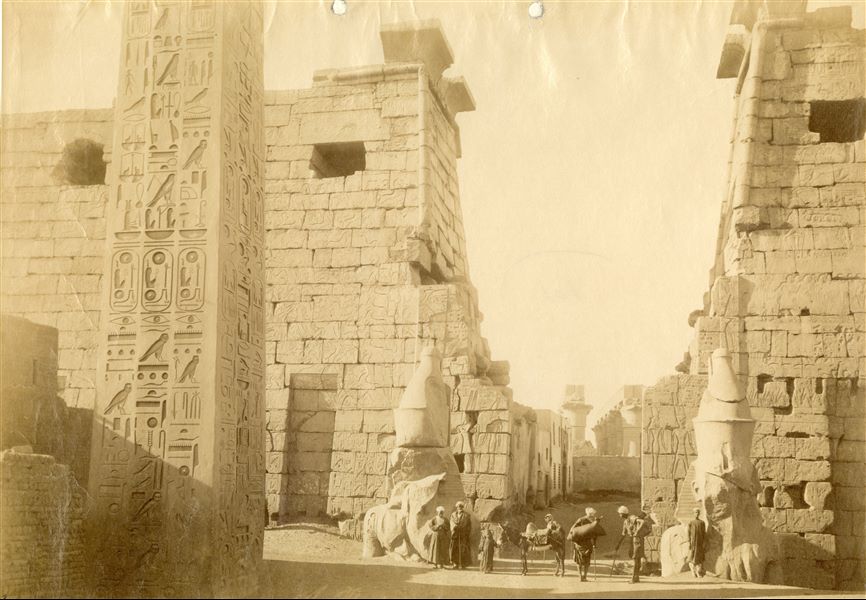
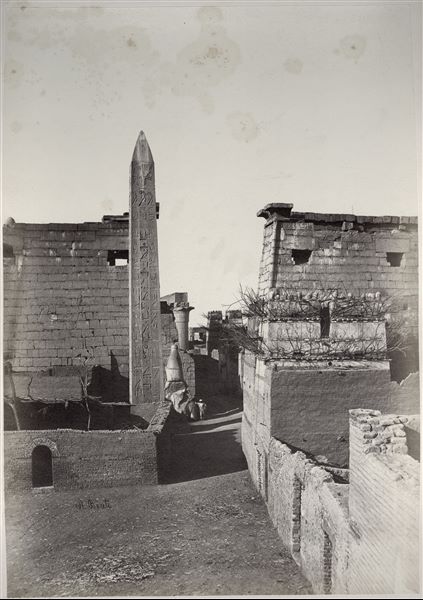
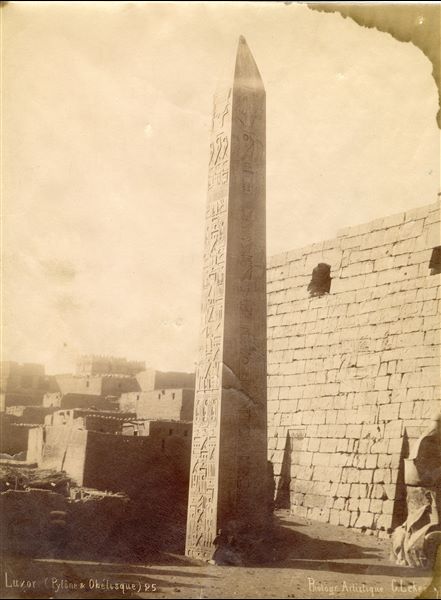
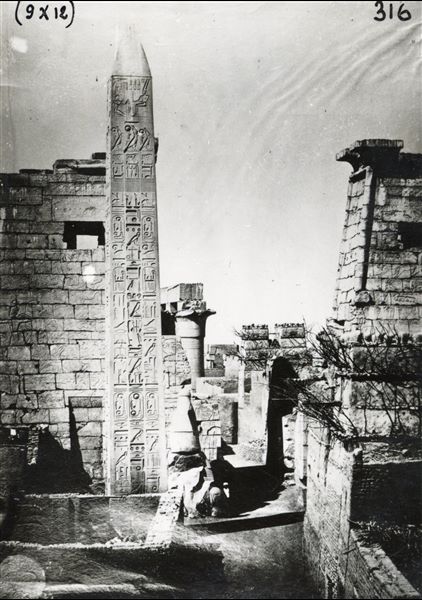
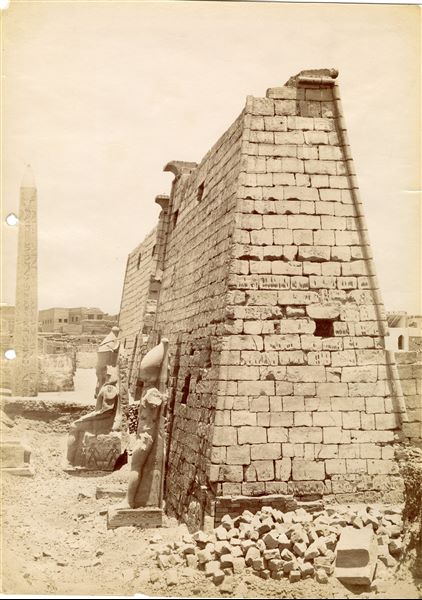


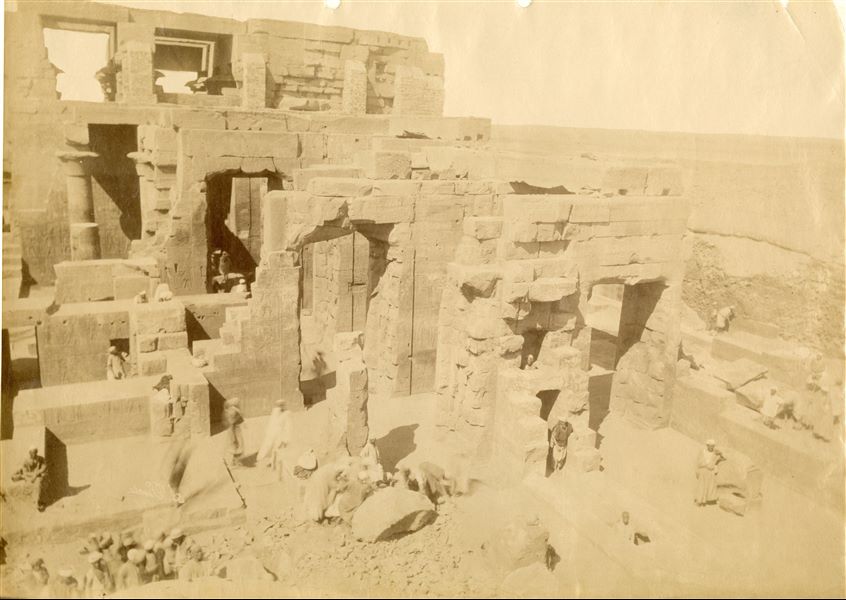
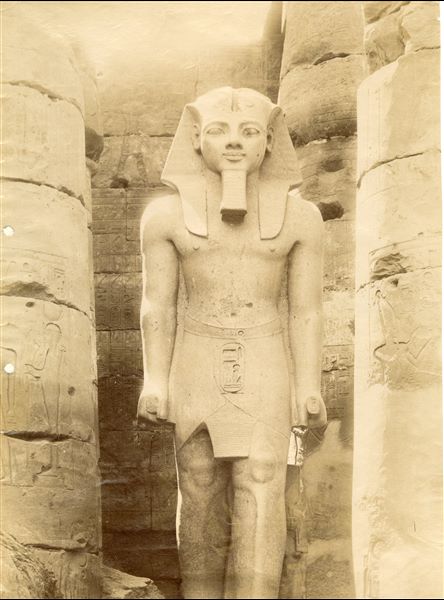


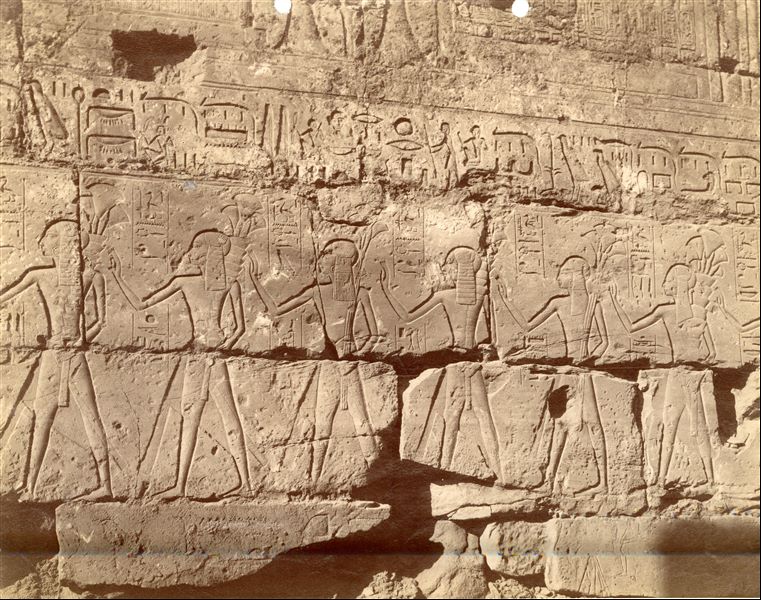
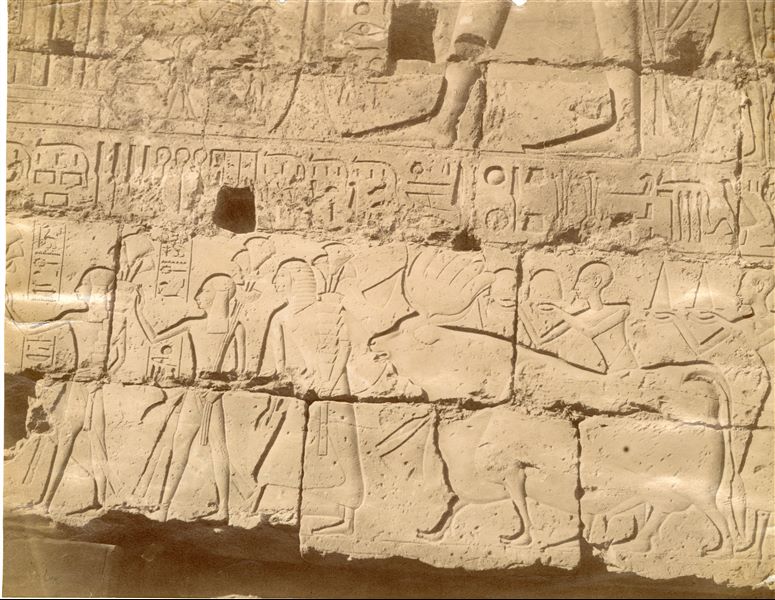
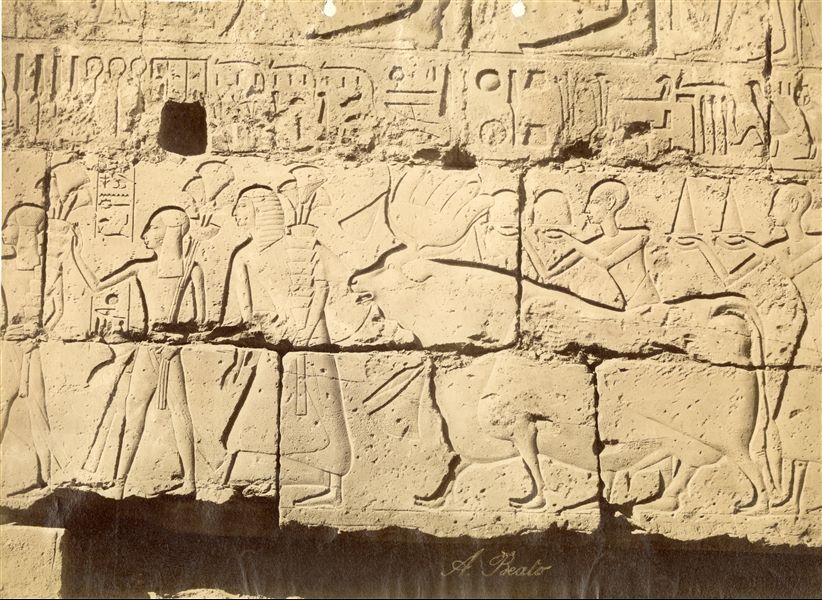
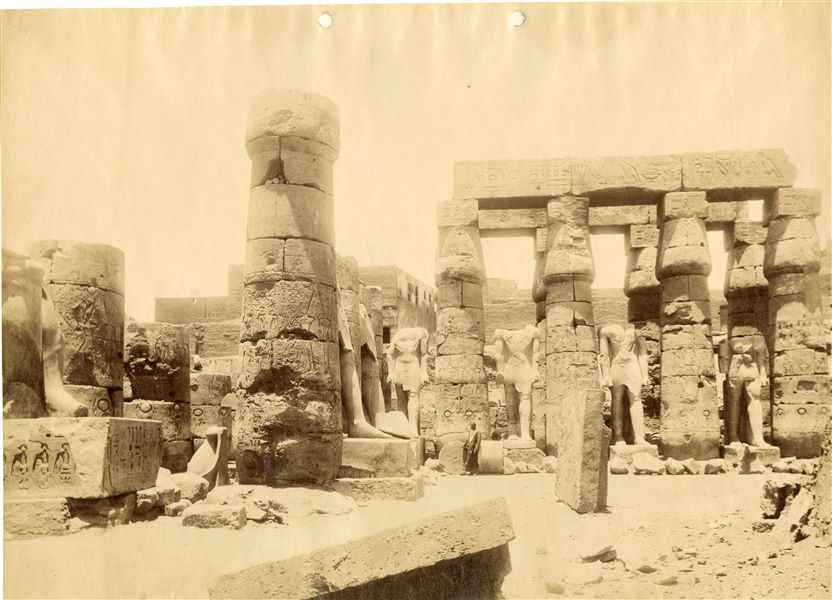



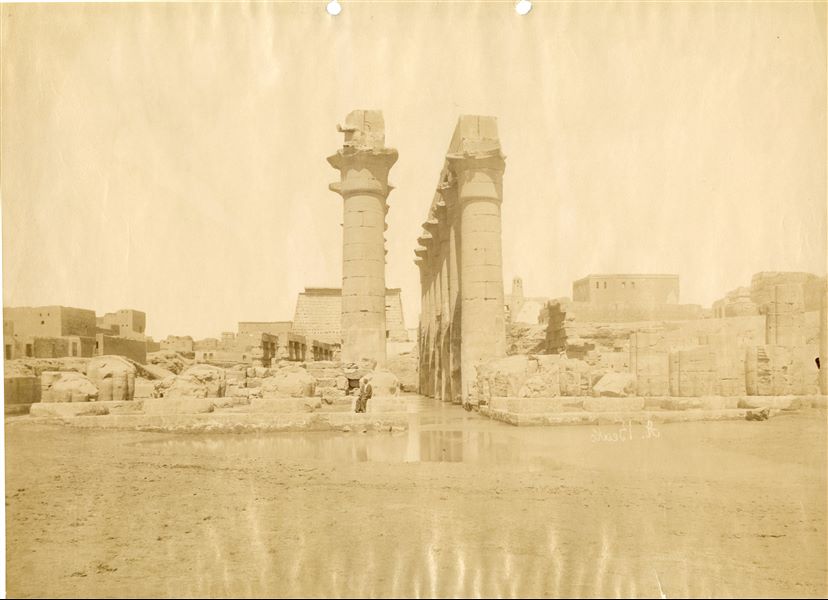

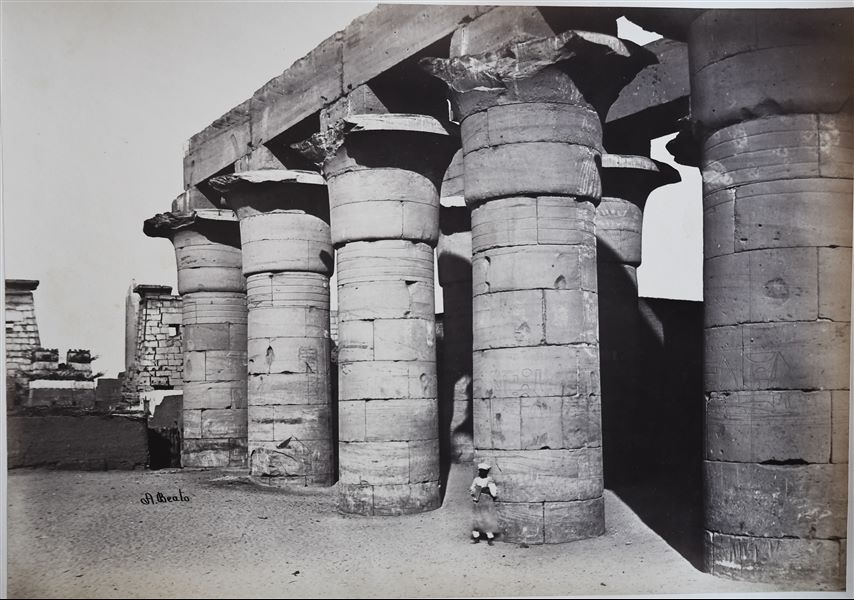
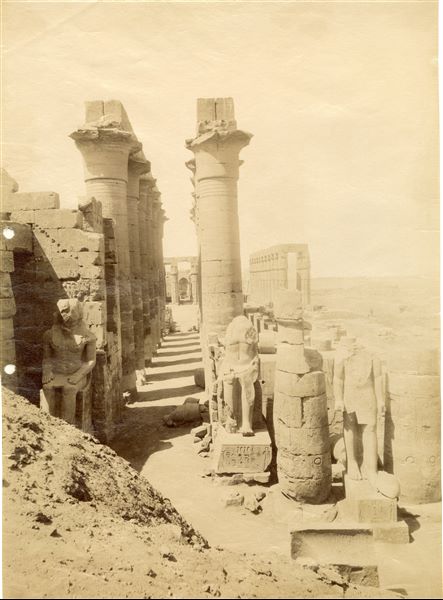
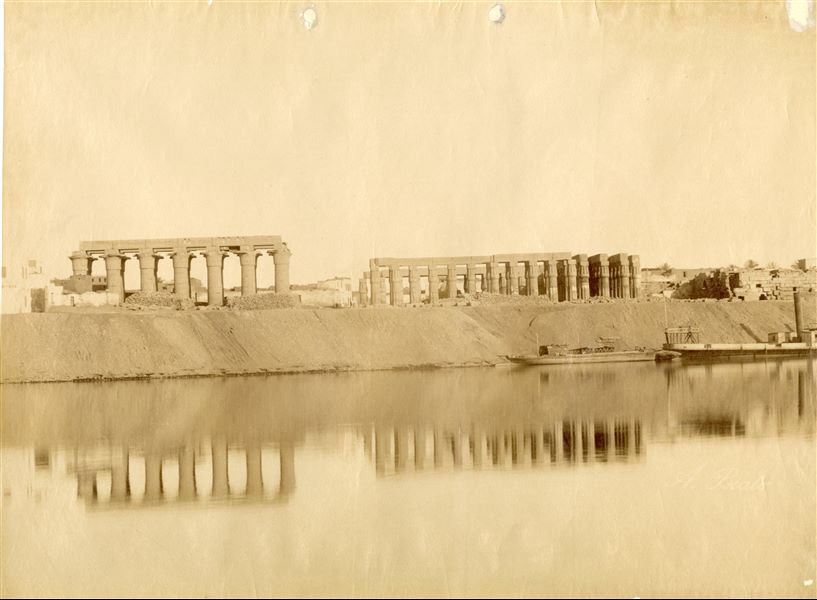
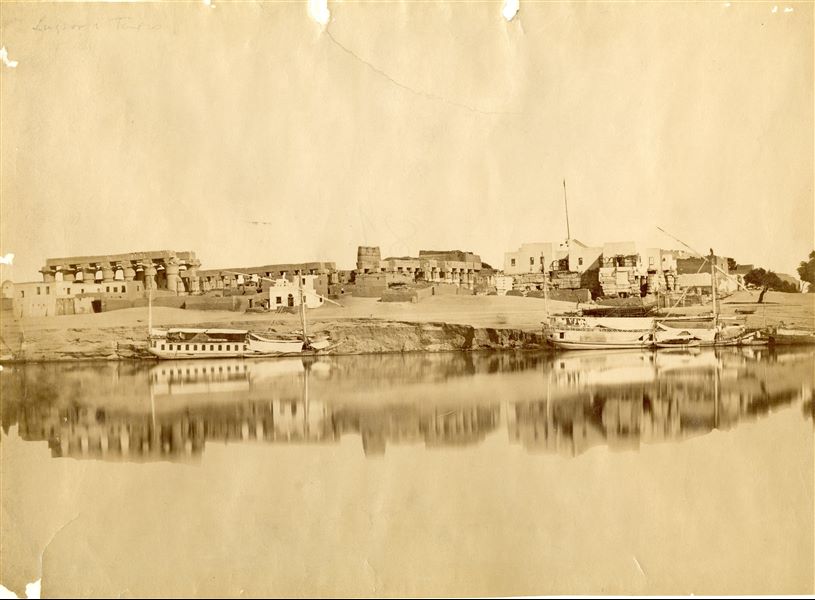
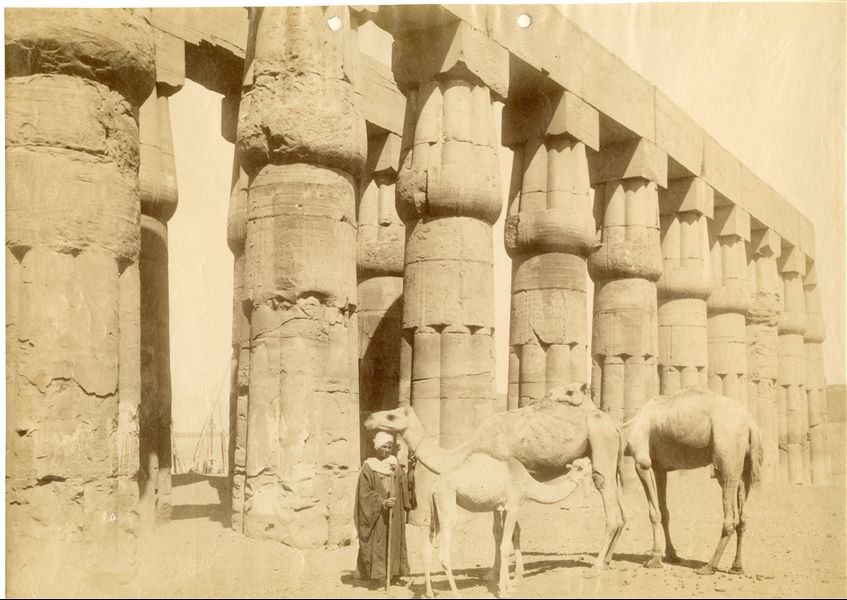
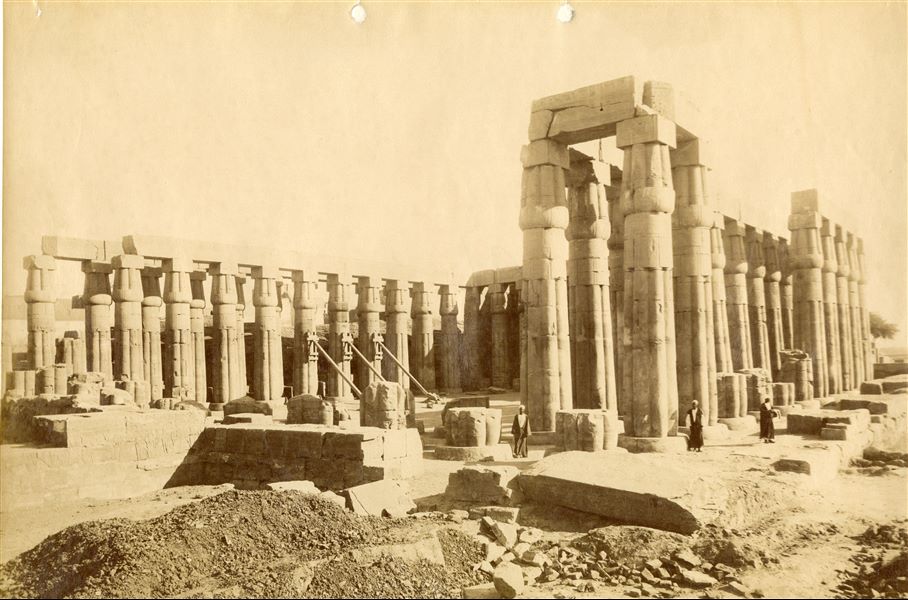
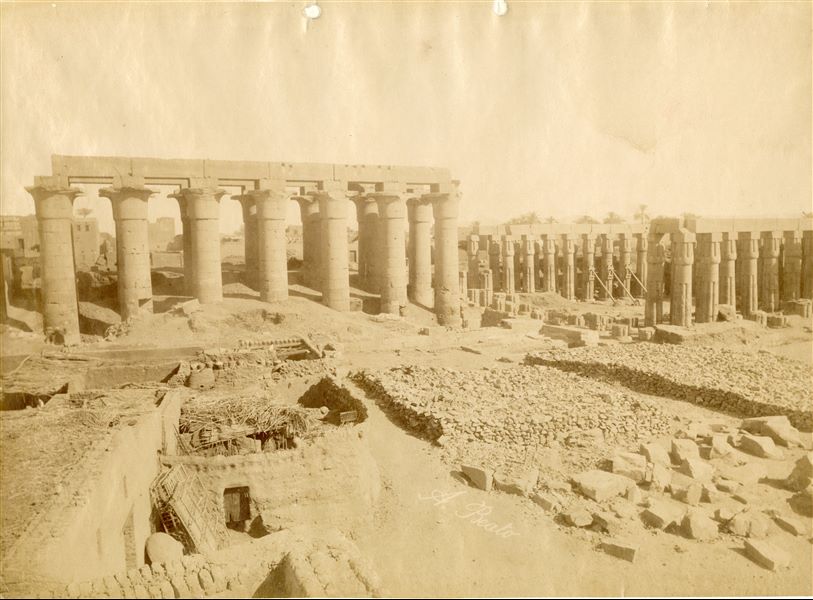

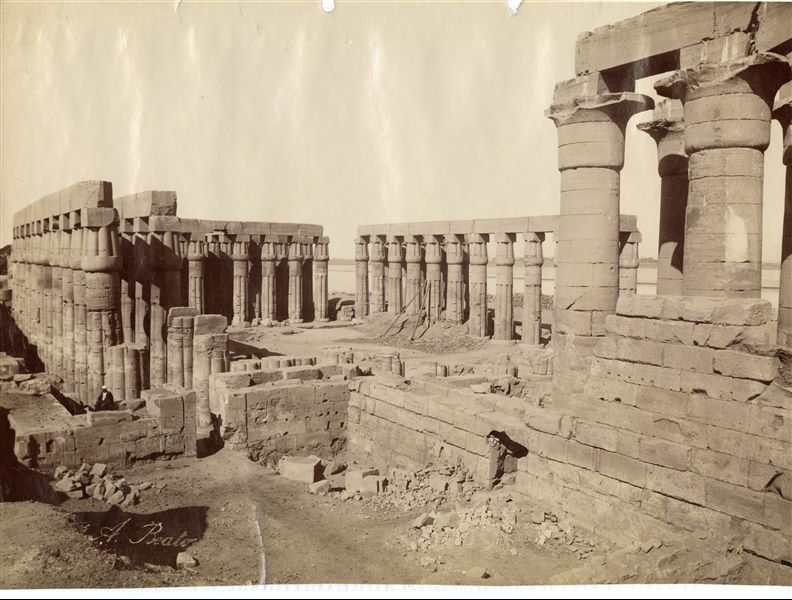
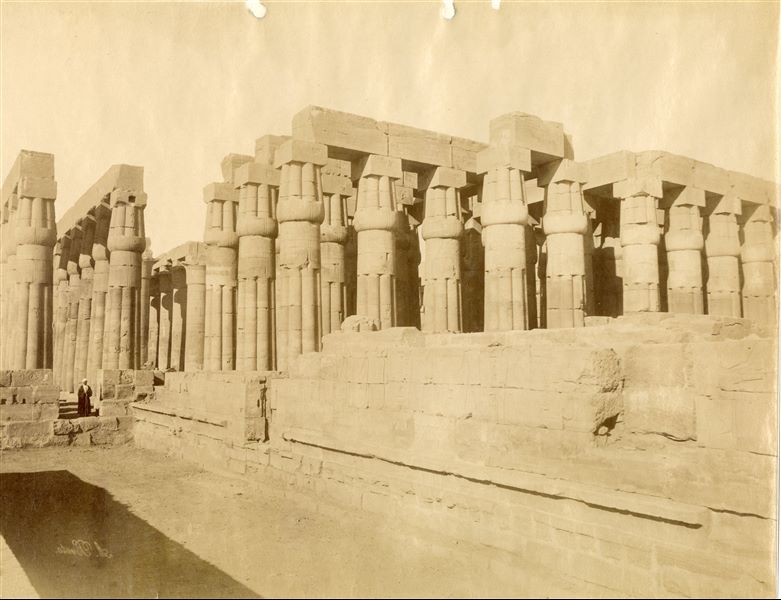
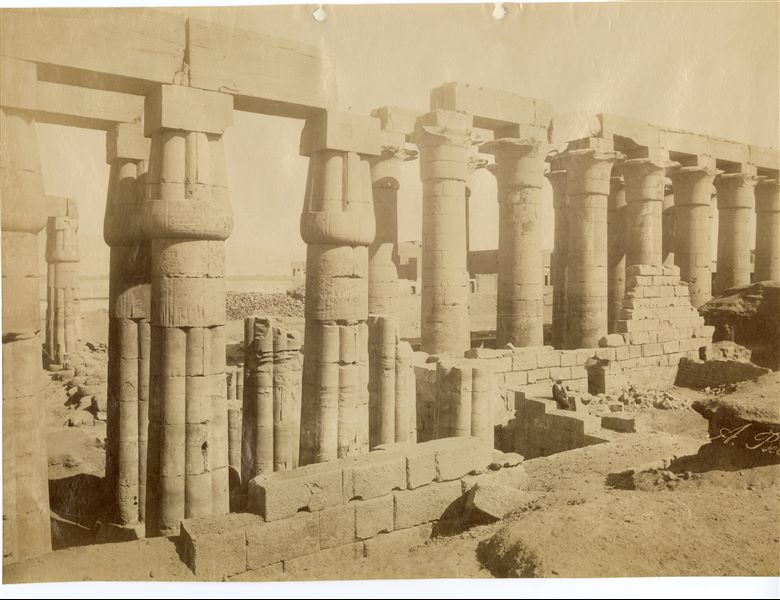



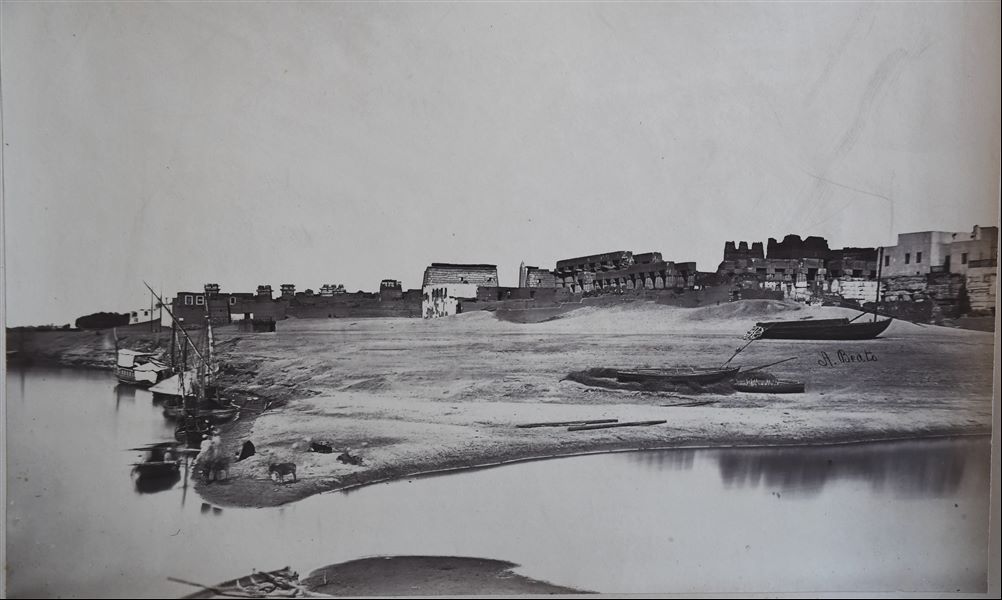
![The photograph shows the building of the Franciscan Mission in Luxor, near the Temple of Luxor, on the terrace where a friar and a person in European dress stand. Behind, the pole with the Italian flag. In the foreground, several feluccas can be seen moored on the bank of the Nile. On the reverse of the image, there is an inscription written in blue pen in fine handwriting “Al Chiarissimo Egittologo Signor Schiapparelli [sic] Umile ricordo di F. Francesco Zanobi da Firenze. Luxor 11 Marzo 1885”, initialled below. The picture is attributable to Antonio Beato.](https://archiviofotografico.museoegizio.it/data/media/STORICO/11-area-tebana/tempio-di-luxor/fotografie-ottocentesche/1CA004738D963D9F2CB7B87F864DB3B6.std_big.jpg)

